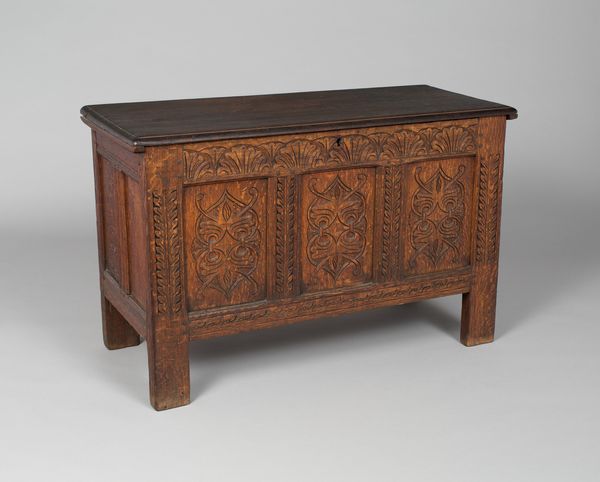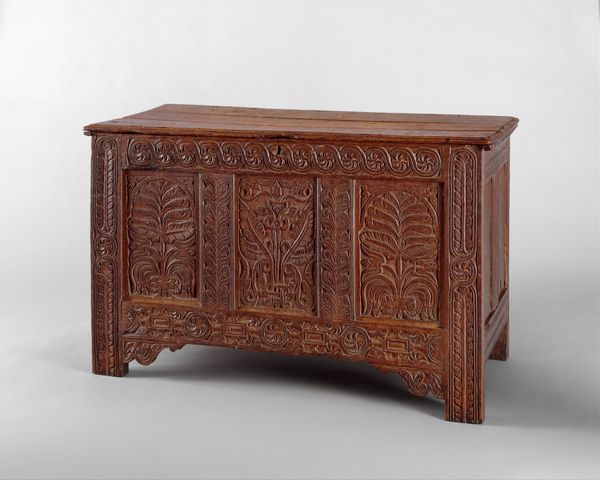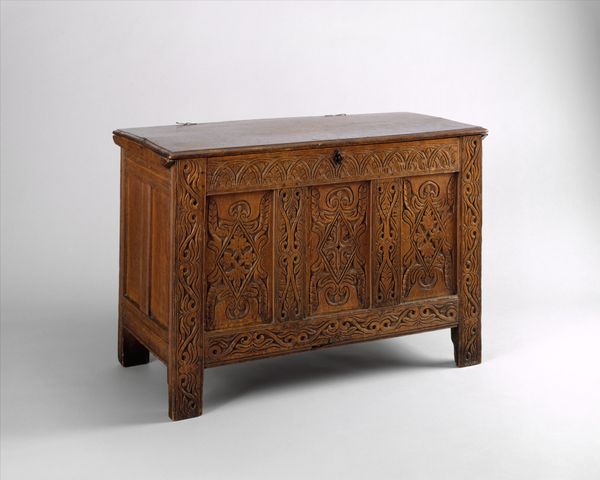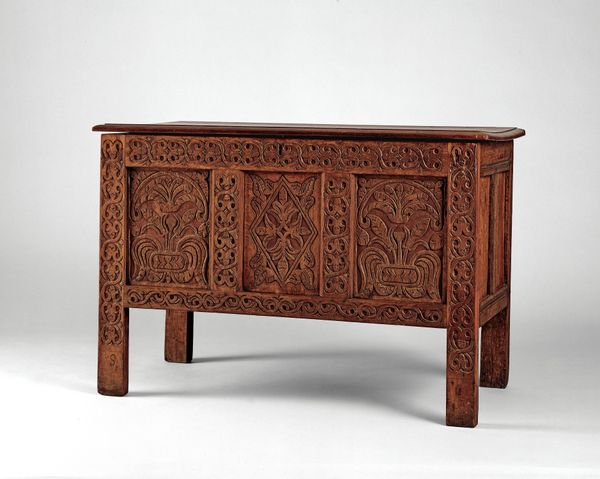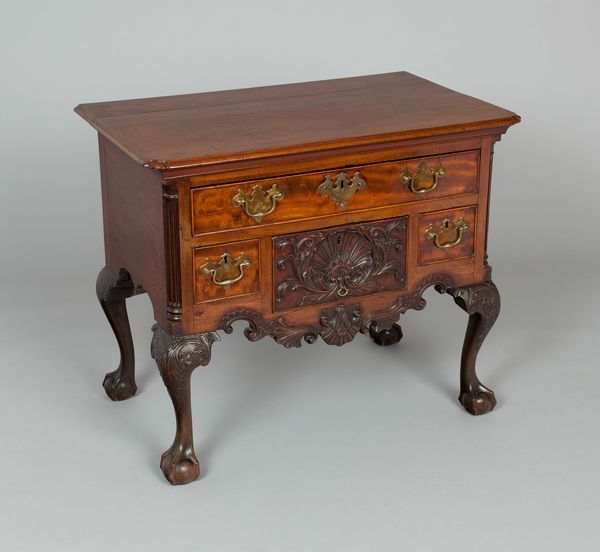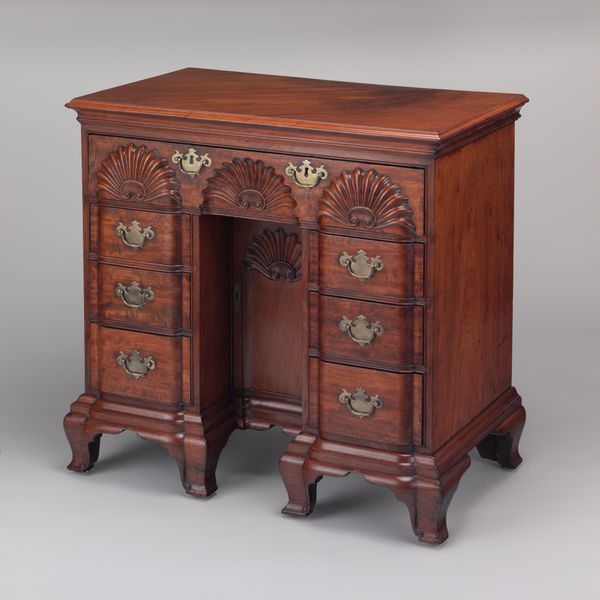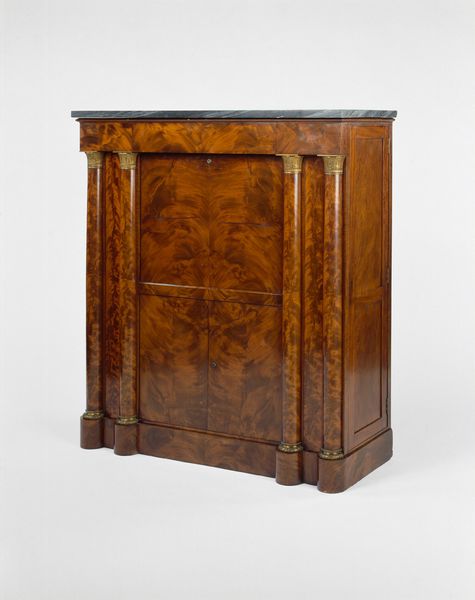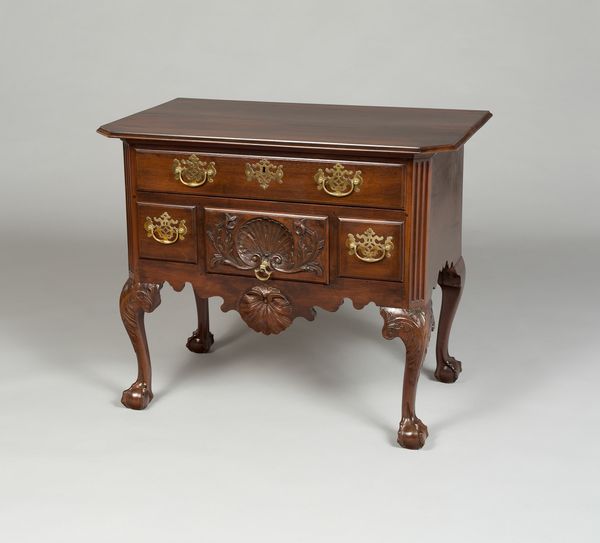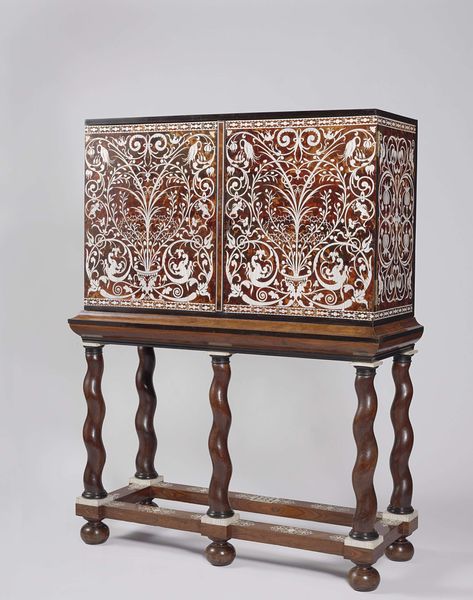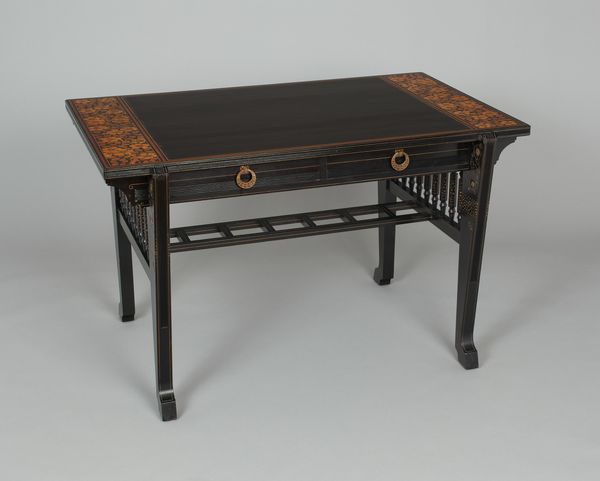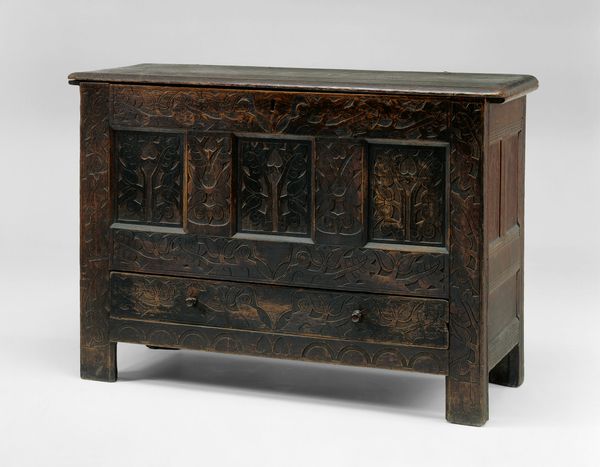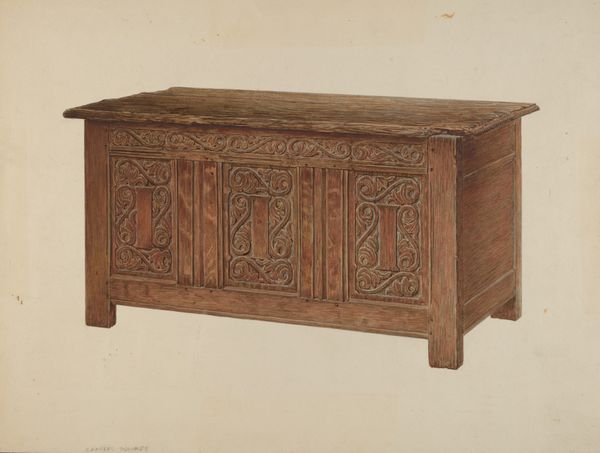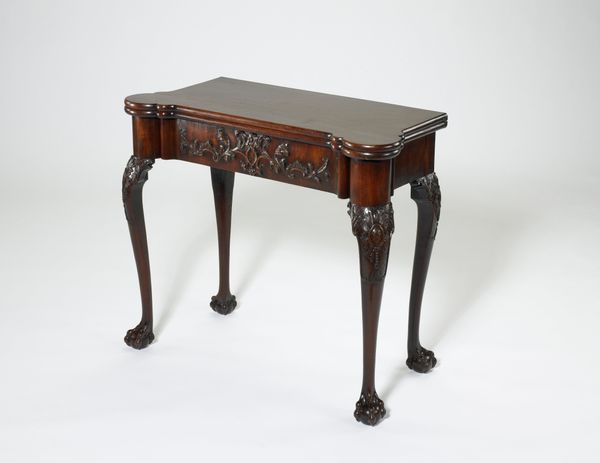
carving, wood
#
wood texture
#
medieval
#
carving
#
furniture
#
wood background
#
neutral brown palette
#
wood
#
northern-renaissance
#
decorative-art
Dimensions: 61.5 × 82 × 44 cm (24 1/2 × 32 3/8 × 17 3/8 in.)
Copyright: Public Domain
Curator: This object is a chest, dating back to approximately 1692. The artisan is unknown, but the piece resides here at the Art Institute of Chicago. It's primarily made of carved wood, displaying an incredible degree of detailed workmanship. Editor: My first impression is one of rustic simplicity and hidden stories. The dark, aged wood whispers of another era. There’s a solidness about it, like it has seen generations come and go. I wonder what it’s guarded over the years. Curator: Indeed. Chests like this weren’t merely decorative; they served as essential pieces of furniture in the 17th century. Consider that many people possessed little more than a single room—everything they owned would have been kept in such a container. The chest's construction and motifs reveal clues about the society that produced it. Editor: You know, looking closer, those carved, radiating patterns – they almost feel like miniature sunrises, optimistic and repetitive. Is there something symbolic about their consistent nature? Curator: The semi-circular fan carvings and the stylized rosette patterns are typical of the Northern Renaissance, a period that celebrated humanism while also drawing on Medieval traditions. These design choices reflect a world in transition, eager to innovate yet still firmly rooted in historical modes. The motifs could represent bounty, nature, and life, conveying the values and beliefs central to that culture. Editor: Right, I suppose people's most valuable objects would benefit from such positive imagery. Were chests of this style common among all social classes? Curator: Carved chests such as this would typically be found among middle-class families and wealthier members of the community. The labour required to create a carved chest and the materials themselves meant it was more costly than plain, undecorated storage options. The visual expression, in that sense, became an expression of the owner’s societal standing. Editor: So, something as seemingly simple as a chest was more than practical. It had political undertones. Amazing to think about all that history etched into the wood! Curator: Absolutely. Its craftsmanship speaks to the cultural values, economic conditions, and even the anxieties of its time. Editor: Knowing its story certainly deepens my appreciation for its place in the world, its solid and dependable existence. Now it whispers a bit louder. Curator: It's a privilege to have this chance to share some historical insights. The history of such utilitarian pieces can often tell a unique story that deserves sharing.
Comments
No comments
Be the first to comment and join the conversation on the ultimate creative platform.
